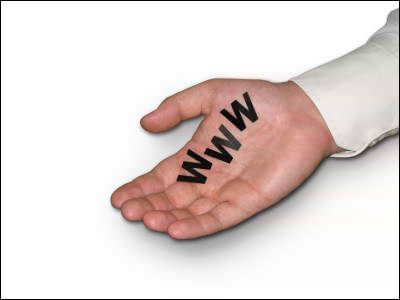What kind of communication did you do before digital communication via the Internet became widespread?

With the Internet, you can instantly send and receive any information to the whole world. However, it is only a recent event that the current high-speed Internet is available everywhere, and
A Quick History of Digital Communication Before the Internet --Eager Blog
https://eager.io/blog/communication-pre-internet/
Eager's Zach Blume first introduces a means of communication called The Entropy of a Horse, which connects Nebraska in the Midwestern United States to California in the western United States. This means that the device was carried by a small horse (pony) at the place where the telegraph system was interrupted, and about 640 kilobytes (equivalent to 6 bits per second) of information was transmitted over 10 days. Although it was possible to transmit information nationwide by this horse transmission system, it was immediately abolished because the telegraph was completed 16 months after it was established. However, the news that Abraham Lincoln was inaugurated as President of the United States in 1860 has been disseminated in just seven days at a time when it was said that 'it would take nearly 100 days to reach the whole country.'

'The Five-Needle Telegraph' is a communication method invented around 1830. A pointer that inputs characters by changing the voltage of a wire while supplying power with a set of wires. To drive and send a message. Since this telegraph could only convey 20 characters and some letters such as C and J could not be used in the alphabet, it was further developed and completed around 1840 with the Morse code telegraph. Morse code was simple and useful in that it could express all letters and numbers simply by combining long and short key presses.

By
At the same time, cable chopsticks stretched underwater like in modern times were born. However, at that time, before the discovery of rubber, cables at that time were vulnerable to water and inflexible. In 1842, Scottish surgeons used sap imported from India for use in medical devices to create flexible, waterproof and durable insulated cables. This cable will be the first submarine cable to cross the Atlantic Ocean. However, due to the underdeveloped acoustic and vibration technology , it took 17 hours to send the first message due to large echoes and interference. In subsequent experiments, it was possible to reduce the time from 17 hours to 1 hour, but at that point the cable was severely damaged and continuous practical use was crushed. In 2016, 150 years later, transatlantic fiber optic cables were able to deliver 40 terabits per second, an improvement of about 13 trillion times compared to 1840.
The Internet is made up of cables laid on the seabed-GIGAZINE

Morse telegraph was groundbreaking, but it also had the drawback of requiring highly trained operators to read quickly and send only one message at a time. Therefore, the telegraph code released by Emile Baudot in 1870 greatly improves the volume and transmission speed of messages by performing 5-bit input using a 5-button keyboard in rhythm.

by M. Rothen
A device called an acoustic coupler, which was invented around 1920, used computer communication using the public switched telephone network to deliver the sound of a speaker over a telephone. It was revolutionary in that it was a voice transmission different from sending a message, but it was also a history of struggles with telephone companies that didn't want to exchange data over their own lines, Zack Bloom wrote.
by Rama
After that, the 'acoustic coupler' that brings the speaker closer to the telephone was further developed, and the 'dataphone' that encodes the digital data of the computer in a format that can pass through the telephone line and delivers it on the telephone line was born. As a result, the speed finally reached 56 kilobits per second. Although it is considerably faster, the bandwidth available on the telephone line is limited, and the bandwidth available for communication is also significantly limited.
The solution to the telephone line restrictions was provided by ALOHAnet at the University of Hawaii. The idea of connecting multiple university campuses with a system like ham radio to create a 'computer network' ultimately laid the foundation for sending text messages on mobile phones.

ALOHAnet is also the basis for the 'Ethernet ' of wired local area networks. Ethernet has become the standard for major wired networks in the 90's, but will be replaced by 'Wi-Fi,' which NCR Corporation invented for store cashiers. Wi-Fi based on Ethernet was released as 'Wave LAN' by Vic Hayes called 'Father of Wi-Fi' in 1990, and it is still used with different specifications even today.
Related Posts:
in Note, Posted by log1e_dh







